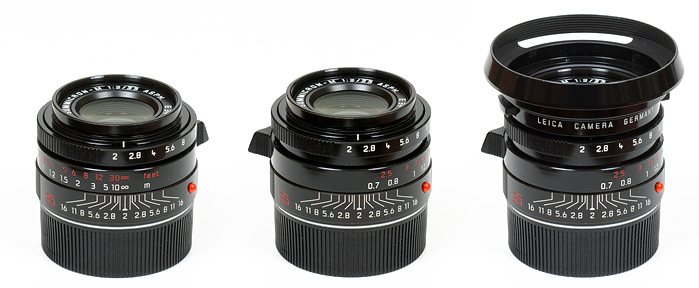|
Page 1 of 3

Review by Markus Stamm, published August 2013
Special thanks to Thomas Koch for providing one of the review units!
Introduction
35 mm is likely the most common focal length among Leica M shooters and, to many, the focal length of choice if they had to get along with only a single lens.
Leica currently offers three 35mm lenses to choose from, with the Summilux 35/1.4 marking the premium end and offering the fastest speed, while the Summarit 35/2.5 on the other end comes in a very small package. In between sits the Summicron 35/2 ASPH, probably the most popular Leica 35mm prime, if not the most popular Leica lens of all. It combines the best of both of its sister lenses: it's reasonably fast, but still very compact. However, as many Leica lenses, it doesn't come cheap, retailing at around 2500 EUR at the time of this review.
The current edition of the lens is the first to feature aspherical elements, after a history of 4 models without aspherical lens, dating back to 1958 (often referred to as Type I to Type IV, the current ASPH model being Type V).
In this review we'll have a look at how the lens performs on our test camera, the Leica M9.
In addition to the most popular anodized black version, the lens is also available in chrome silver. Next to the regular variants, there were also Titanium and black paint limited editions. The latter is shown below. Unlike the regular lens, which features a plastic square hood, the black paint version comes with a "vented" metal hood. Those who prefer such a hood over the default one can optionally invest in a Leica 12585H or 12504 replacement.
As you'd expect from a Leica lens, the build quality is excellent. The focus ring is nicely damped and works very smoothly. The minimum focus distance is 0.7m, which matches the minimum distance the Leica M rangefinder is able to cover. The focus path from infinity to MFD is roughly 90 degrees. The lens features a finger lever on the focus ring.
The chrome and black paint versions are surprisingly heavy, they feel about twice as heavy than you'd expect form such a tiny lens.
The aperture ring features half stop clicks and has no play. The smallest aperture setting is f/16. The 8 aperture blades are straight (not rounded).

As you can see in the product images above and below, the lens extends a little when focusing closer

| Specifications |
|---|
| Optical construction | 7 elements in 5 groups, incl. 1 aspherical element |
| Number of aperture blades | 8 |
| min. focus distance | 0.7 m (max. magnification ratio 1:17.5) |
| Dimensions | 34.5 x 53 mm |
| Weight | 255 g (black anodized), 340 g (silver, black paint) |
| Filter size | E39 (non-rotating) |
| Hood | Clip-on, rectangular and plastic (black/silver) or vented metal (black paint) |
| Other features | Finger lever on focus ring |
|